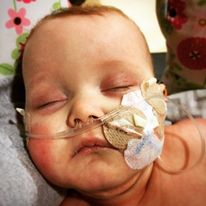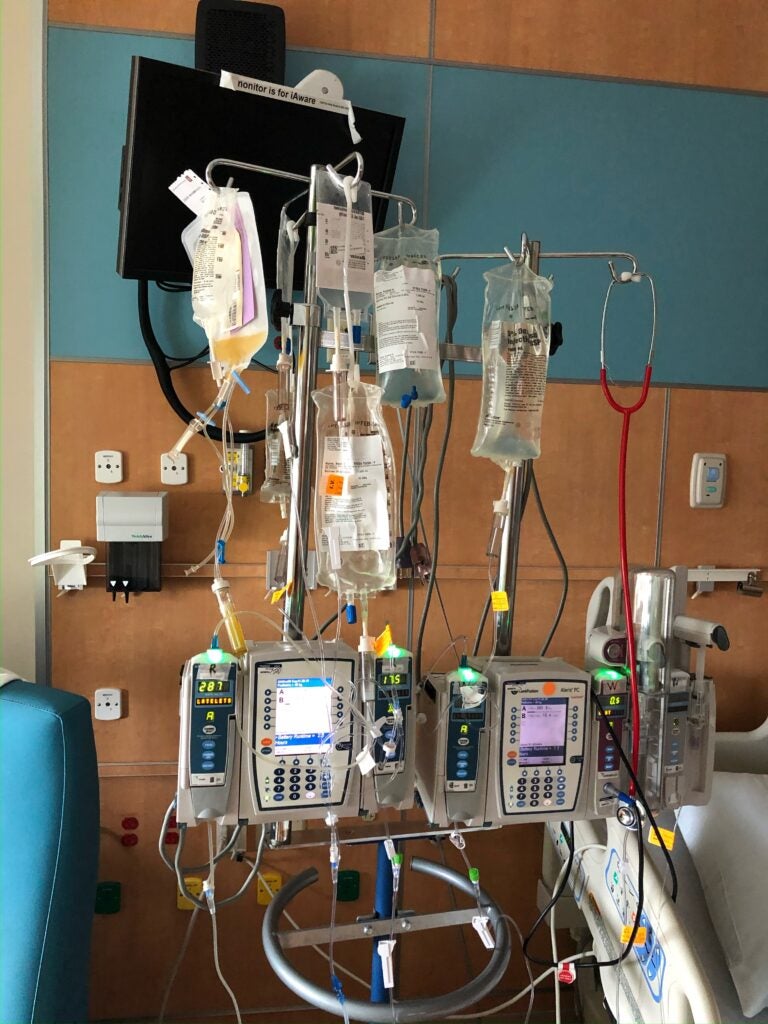Families share 2 girls’ experiences with bone marrow transplants
According to the American Cancer Society, more than 10,000 children younger than 15 will be diagnosed with some form of cancer this year.
Riley Hospital for Children at Indiana University Health is one of the top hospitals in the country in treating pediatric cancer. Each year, Riley treats an average of 200 children with childhood cancer and provides care for about 350 ongoing cancer patients.
News 8’s Cody Adams knows well the role that Riley and its staff play in caring for children with cancer because his oldest daughter, Madi, was diagnosed with cancer shortly after birth.
All this week, you’ll get the “INside Story” about what children go through as they fight for their lives, how the illness and its treatment impacts their families, and how Riley makes a difference in the battle against childhood cancer.
Part 1 | Part 2 | Part 3 | Part 4 | Part 5

Treating childhood cancers can be a lot like a puzzle. It takes a lot of trial and error to make sure each piece fits just the right way to give the child the best chance of being cured.
It’s something the doctors at Riley Hospital for Children pride themselves on.
Dr. Jodi Skiles is the medical director of the pediatric stem cell transplant and immunotherapy program at Riley. For the last four years, she’s been leading some of the country’s best doctors and nurses in treating pediatric cancer patients from across the region.
“Both physically and mentally, kids are just really resilient, and that part of kids never ceases to amaze me,” Skiles said. “The other part of that is, kids have healthier organs than adults have, so that affords us the opportunity to be very aggressive in the therapies so that we can achieve a cure.”
Madi’s puzzle was complicated. At just four months old, she was diagnosed with a rare form of leukemia called juvenile myelomonocytic leukemia, which is more aggressive than other forms of blood cancer.
Chemotherapy was a necessity in order to wipe out every bad blood cell in her body. The chemo made her sleep nonstop and she even had to have a morphine drip to fight off the intense pain.
Nicole Adams, Madi’s mother, says it was a difficult time for Madi and the family.
“When she was awake, it was really hard, because she couldn’t tell us how it felt,” Nicole said. “I remember, we struggled with that a lot. There were times that she just cried because we didn’t want to overdose her on pain meds, but also very clearly, she was probably in pain.”
The toxicity from chemotherapy is the same in a 6-month-old baby as it is in a 60-year-old man. Dr. Skiles and her team are tasked with navigating the treatment plan to do what needs to be done without too much damage to the child.
“In general, if you look at the field as a whole, patients do better when they’re treated more intensively,” Skiles said. “The question is, can they tolerate the toxicity?”
After chemotherapy, Madi received a bone marrow transplant at Riley. That’s where healthy, blood-forming stem cells are infused into the body to replace diseased or damaged bone marrow, according to the Mayo Clinic.
The steps leading up to a bone marrow transplant are complicated. The patient battling cancer has to have a match, which is found through a national registry of bone marrow donors. They look for as close to a perfect match as possible.
The healthy stem cells Madi received came from a donor who was a perfect match — someone we don’t know and have never met — and the transplant was a success.
Seven years later, we can say that things could not have gone much better.
“We know because of science and the study she was enrolled in, in that specific mutation, there has been 100% survival in that population without relapse,” Skiles said. “That is such an amazing thing to know. So, it’s very rare for me to say, basically, there is no chance of relapse and we can only say that thanks to science and the clinical trial she was enrolled in.”
Madi is one of many children who has received a bone marrow transplant at Riley.
One of those children is Kendall Wynne.
When Kendall, now 17, was first diagnosed with leukemia at age five, she only got chemotherapy. That treatment lasted three years, and it was hard time for Kendall and her mother, Tracie Hobson.
“I had all these medicines I had to give her at a time, and a certain way, and all that, and the first time she took them, she threw them all up,” Tracie said. “I freaked out and thought, ‘I cannot do this, I can’t do this.’ And I just stepped away. I took a moment and I cried, and thought, ‘I can’t let her see me cry. I just have to get through this.’”
When Kendall was 14, her cancer returned. She only had one option: a bone marrow transplant at Riley.
“I’m gonna be honest. [During] that meeting we had as a family with Dr. Skiles, I cried the whole time,” Tracie said. “I heard bits and pieces. All I heard was, ‘transplant’ and ‘this is my only option,’ so anything after that is kind of a blur.”
Doctors could not find a perfect match for Kendall, but her brother was close enough.

“I laid up many of nights just praying, like, ‘God, get her through this. You did it once, I know you can do it again,’” Tracie said.
The process after the transplant is complete is long and grueling, while the patient hopes the new bone marrow won’t be rejected by the body.
Kendall likens it to an amusement park ride.
“There was never a straight way to go. There was always upwards and downwards,” Kendall said. “There was no right way to go.”
Kendall’s experience has not been an easy one. She has battled infections and fought for her life.
“Most recently she was in the ICU and on a ventilator,” Tracie said. “That was the most difficult for me. [It was] difficult for me and her father, to actually see her like that.”
Kendall continues to recover, but she is already looking to the future. Her goal is to become a nurse to help people who face the same battles she has fought.
“I feel like a motivator to other people,” Kendall said. “Just a walking miracle, just to show people I can battle it not only once, but twice, and get through it.”
To sign up to become a bone marrow donor, visit the Be The Match website.


